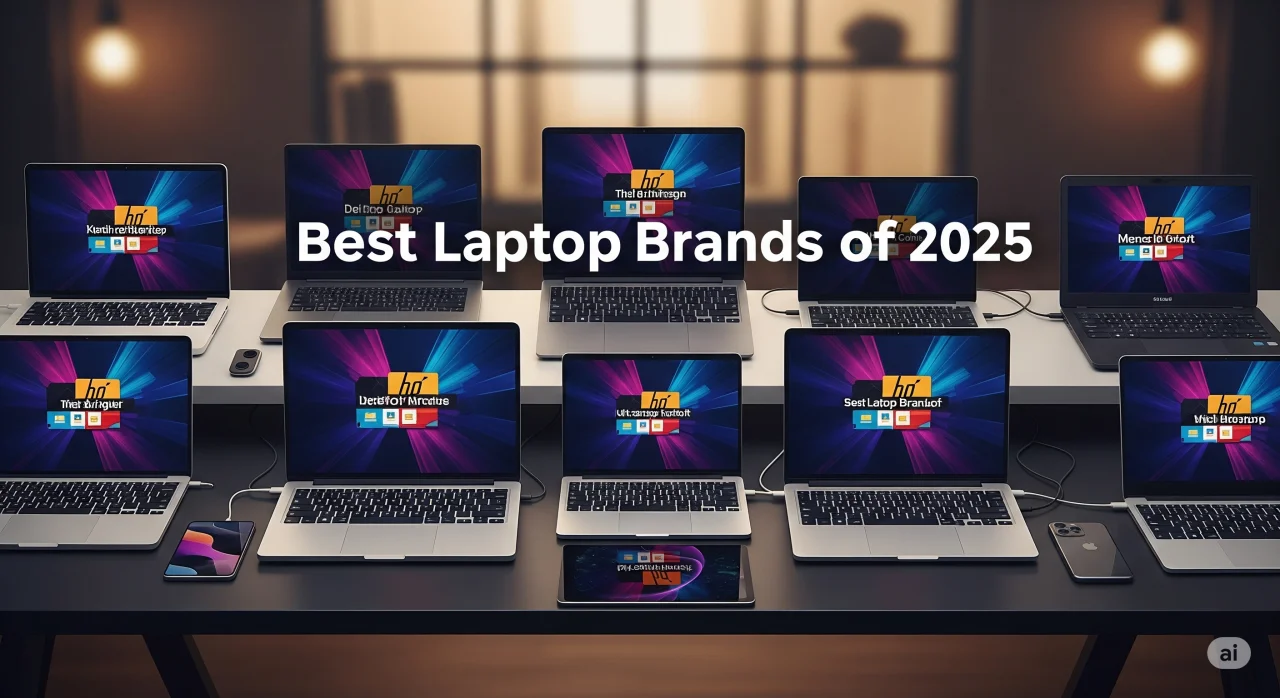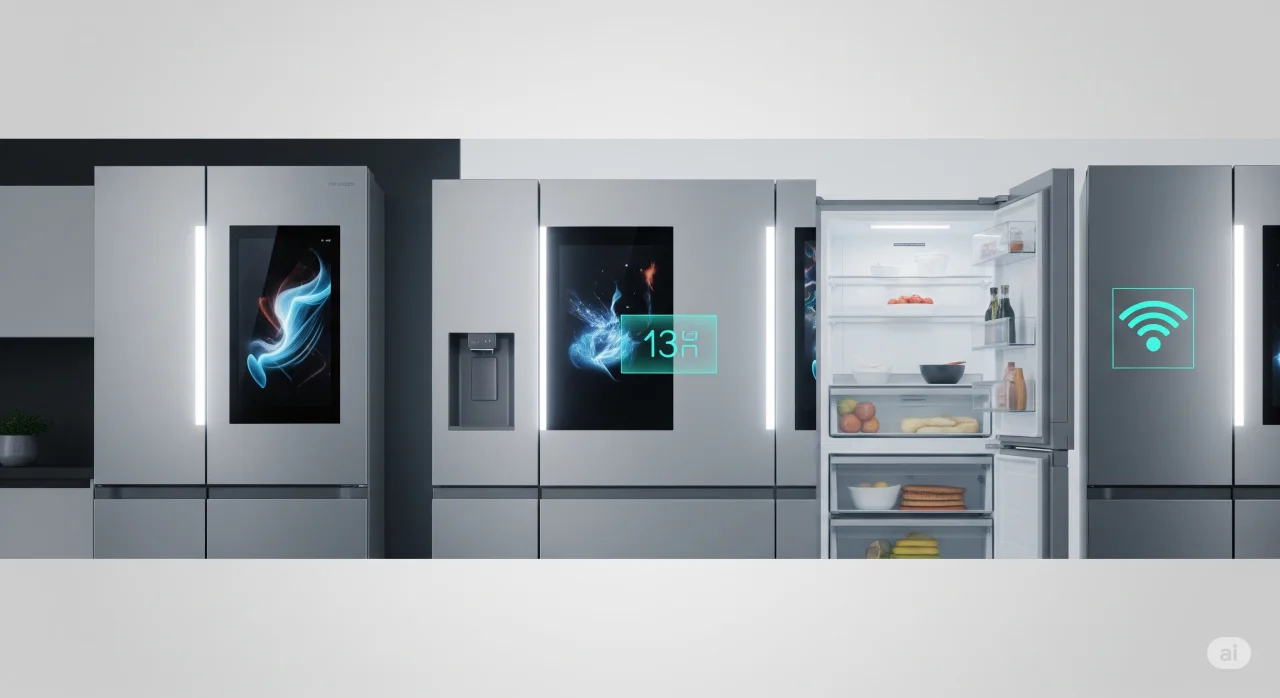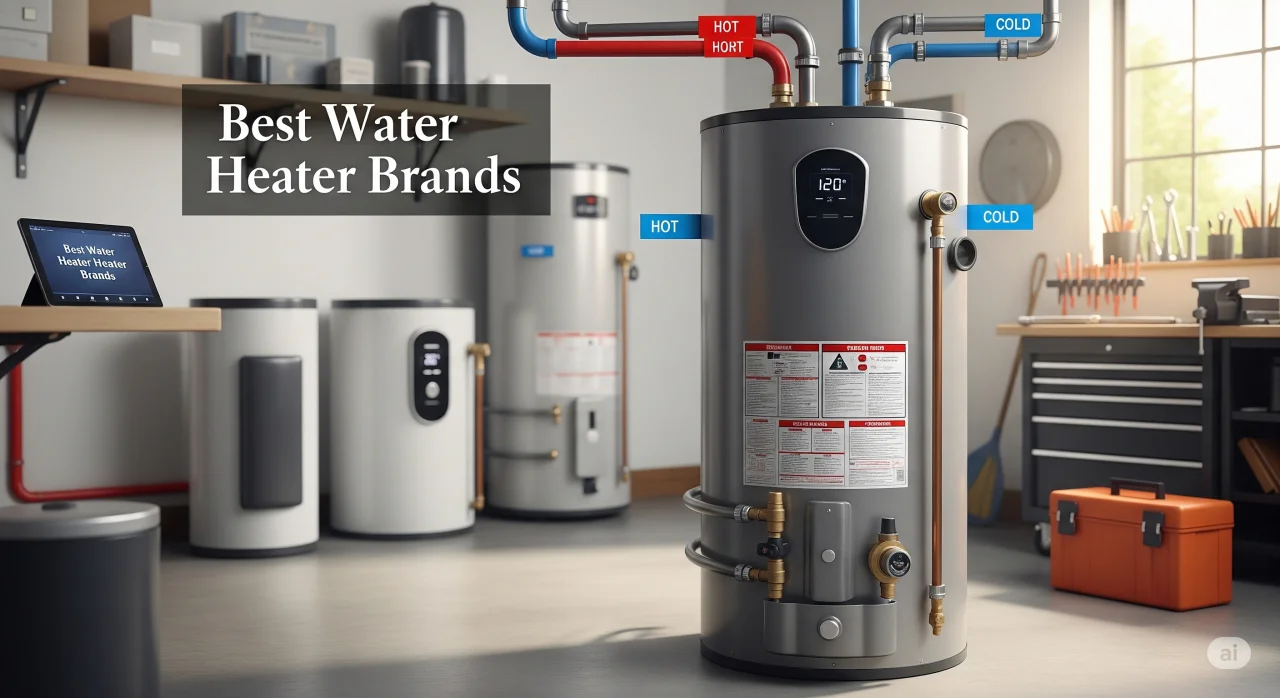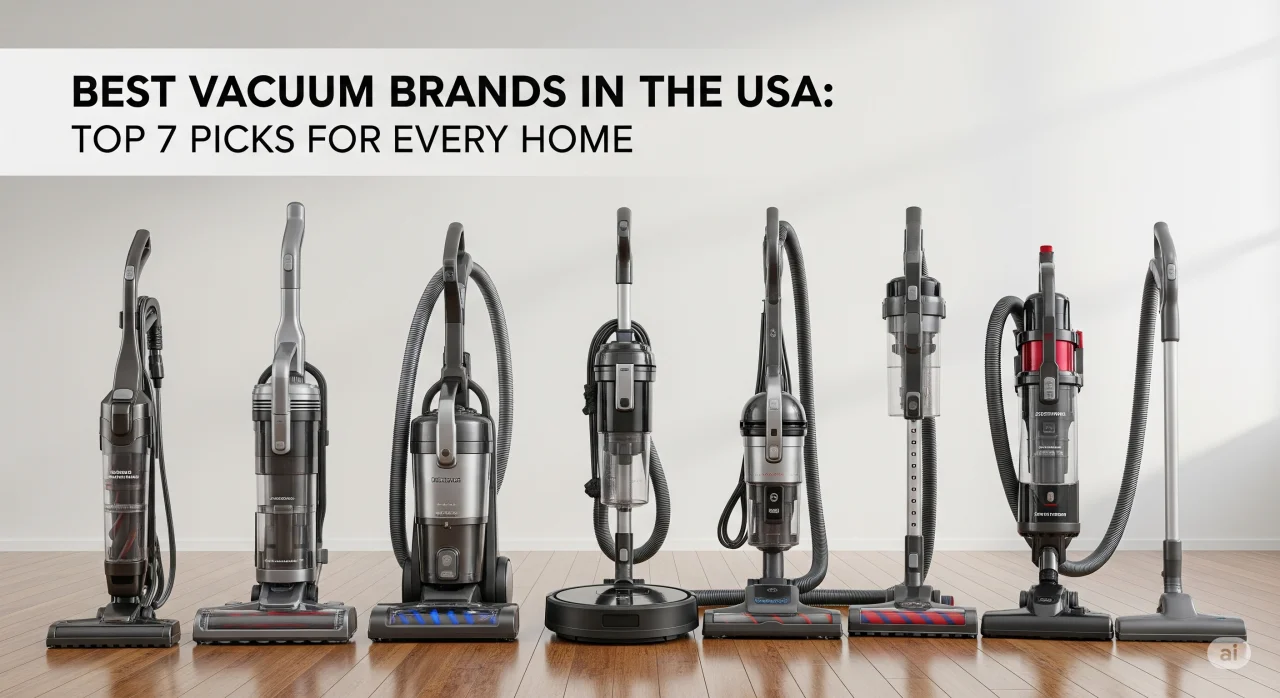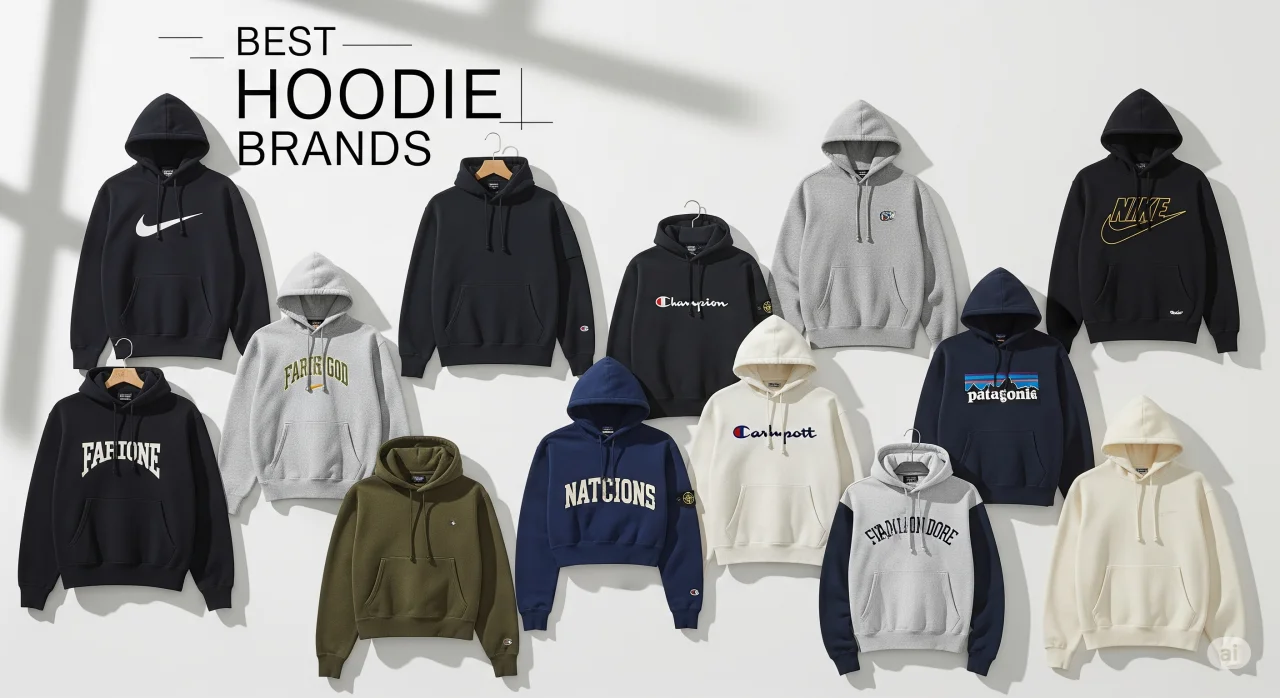In today’s fast-paced digital world, choosing the right laptop is crucial for students, professionals, creatives, gamers, and business users. With so many brands available—Apple, Dell, HP, Lenovo, ASUS, Microsoft, and Acer—each offering unique features, performance levels, and designs, making an informed decision can be overwhelming.
This comprehensive guide explores the best laptops from the top brands, comparing performance, display quality, battery life, storage, processor options, and key features. Whether you’re looking for a premium ultrabook, gaming powerhouse, 2-in-1 convertible, or business laptop, this guide provides detailed insights into each series and model to help you make the best choice.
By understanding the strengths of Apple MacBook, Dell Inspiron, XPS, Alienware, HP Pavilion, Spectre, Envy, Omen, Lenovo ThinkPad, Yoga, IdeaPad, Legion, ASUS ZenBook, VivoBook, ROG, TUF, Microsoft Surface, and Acer Aspire, Swift, Predator, Nitro, ConceptD, you can confidently select the device that fits your needs.
Apple Laptops
1. About Apple Inc.
Apple Inc., headquartered in Cupertino, California, is one of the world’s most influential technology companies. Founded in 1976, Apple has consistently revolutionized the way people interact with technology, from the introduction of the Macintosh in 1984 to the latest Apple Silicon-powered MacBooks.
Apple’s philosophy centers on creating products that combine innovative hardware, intuitive software, and seamless integration with other Apple devices. This ecosystem approach ensures users enjoy a smooth, interconnected experience across iPhone, iPad, Apple Watch, and Mac.
2. Overview of Apple Laptops
Apple’s laptop lineup falls under the MacBook brand, with two main product families:
- MacBook Air – Ultra-light, portable, and designed for everyday use.
- MacBook Pro – High-performance laptops built for demanding professional workloads.
All MacBooks feature Retina displays, solid-state storage, premium aluminum unibody construction, and run on macOS, Apple’s exclusive operating system known for its stability, security, and smooth performance.
3. The Power of Apple Silicon
Since late 2020, Apple has replaced Intel processors with Apple Silicon chips such as the M1, M2, and M3 series. These chips integrate the CPU, GPU, and Neural Engine for unmatched efficiency and performance.
Apple Silicon Key Advantages:
- High Performance with Low Power Consumption – Enables long battery life.
- Integrated Neural Engine – Optimizes AI and machine learning tasks.
- Unified Memory Architecture – Allows the CPU and GPU to share the same memory for faster processing.
- Silent or Efficient Cooling – Some models run without fans, others have advanced thermal systems for heavy workloads.
4. Detailed Model Comparisons
4.1 MacBook Air
- Best for: Students, writers, business professionals, and everyday users.
- Display: 13.6-inch or 15.3-inch Liquid Retina
- Chip Options: M1, M2, or M3
- Storage: Up to 2TB SSD
- Battery Life: Up to 18 hours
- Weight: Around 1.24 kg (13-inch model)
- Pros: Ultra-portable, silent operation, affordable for Apple standards.
- Cons: Limited to two Thunderbolt/USB 4 ports, less powerful GPU compared to Pro models.
4.2 MacBook Pro 13-inch
- Best for: Creatives and professionals who need more power than Air but still want portability.
- Display: 13.3-inch Retina with P3 wide color gamut
- Chip Options: M2
- Storage: Up to 2TB SSD
- Battery Life: Up to 20 hours
- Special Feature: Touch Bar for dynamic controls
- Pros: Compact yet powerful, longer battery life than Air in some tasks.
- Cons: Older design, fewer ports than newer Pro models.
4.3 MacBook Pro 14-inch
- Best for: Photographers, video editors, and software developers.
- Display: 14.2-inch Liquid Retina XDR, ProMotion 120Hz refresh rate
- Chip Options: M2 Pro or M2 Max
- Storage: Up to 8TB SSD
- Battery Life: Up to 18 hours
- Ports: HDMI, SDXC card slot, 3x Thunderbolt 4, MagSafe charging
- Pros: Exceptional display quality, pro-level performance, wide port selection.
- Cons: Heavier than Air, higher price point.
4.4 MacBook Pro 16-inch
- Best for: Professionals working with 3D modeling, large-scale video editing, or music production.
- Display: 16.2-inch Liquid Retina XDR, ProMotion
- Chip Options: M2 Pro or M2 Max
- Storage: Up to 8TB SSD
- Battery Life: Up to 22 hours
- Pros: Largest screen, maximum performance, longest battery life of any MacBook.
- Cons: Heavier and more expensive; designed for power users.
5. Which Apple Laptop Should You Choose?
- For Everyday Use & Portability: MacBook Air (M2 or M3)
- For Balanced Power & Portability: MacBook Pro 13-inch
- For Creative Professionals: MacBook Pro 14-inch with M2 Pro or M2 Max
- For Maximum Performance: MacBook Pro 16-inch with M2 Max
6. Why Apple Laptops Stand Out
- Premium Build Quality: Aluminum unibody for durability and elegance.
- Best-in-Class Displays: Retina and Liquid Retina XDR for vibrant colors and sharp detail.
- macOS Integration: Works flawlessly with other Apple devices.
- Resale Value: Holds value longer than most Windows laptops.
- Customer Support: AppleCare+ and Apple Store service network.
7. Official Apple Store
For full specifications, customization options, and the latest prices, visit:
https://www.apple.com/mac
Dell Laptops
1. About Dell Technologies
Dell Technologies, founded in 1984 by Michael Dell in Austin, Texas, is one of the world’s largest and most respected computer manufacturers. Known for a wide range of products—from budget-friendly home laptops to high-performance business and gaming machines—Dell combines innovation, customization, and durability.
With decades of experience, Dell offers solutions for students, professionals, businesses, and gamers, and is highly regarded for its reliability, after-sales support, and diverse product lineup.
2. Overview of Dell Laptops
Dell’s laptop range is designed to meet different needs and budgets, with major product families including:
- Inspiron Series – Affordable, everyday laptops for home and office use.
- XPS Series – Premium ultrabooks with cutting-edge displays and performance.
- Alienware Series – High-end gaming laptops with advanced graphics and cooling.
- Latitude Series – Business-oriented laptops with enterprise security and durability.
3. Key Strengths of Dell Laptops
- Diverse Options: Models for budget buyers, creatives, and gamers.
- Customizable Configurations: Choose CPU, GPU, RAM, and storage to fit your needs.
- Premium Displays: 4K OLED and InfinityEdge options in high-end models.
- Durability: Solid build quality, tested for heavy use.
- Customer Support: Global service network and ProSupport for business users.
4. Detailed Model Comparisons
4.1 Dell Inspiron Series
- Best for: Students, casual users, and home offices.
- Display: 14-inch to 16-inch Full HD or QHD+
- Processor Options: Intel Core i3 to i7, AMD Ryzen 3 to Ryzen 7
- Storage: Up to 1TB SSD
- Battery Life: Around 8–12 hours
- Pros: Affordable, solid everyday performance, variety of sizes.
- Cons: Less premium build than XPS, average display brightness.
4.2 Dell XPS Series
- Best for: Creative professionals, designers, and premium laptop buyers.
- Display: 13-inch, 15-inch, or 17-inch InfinityEdge; FHD+, UHD+, or OLED options
- Processor Options: Intel Core i5 to i9 (13th Gen)
- Storage: Up to 4TB SSD
- Battery Life: 10–15 hours depending on display type
- Pros: Stunning display quality, premium aluminum and carbon fiber build, thin and light design.
- Cons: Higher price range.
4.3 Alienware Series
- Best for: Gamers and performance enthusiasts.
- Display: 15-inch, 16-inch, or 18-inch QHD+ or UHD; up to 480Hz refresh rate
- Processor Options: Intel Core i7 to i9 HX series, AMD Ryzen 7 or 9
- Graphics: NVIDIA GeForce RTX 4060 to RTX 4090
- Storage: Up to 4TB SSD
- Battery Life: 5–8 hours (gaming laptops consume more power)
- Pros: Top-tier gaming performance, customizable RGB lighting, advanced cooling.
- Cons: Heavier and bulkier than non-gaming laptops.
4.4 Latitude Series
- Best for: Business users and professionals needing enterprise-level security.
- Display: 13-inch to 15-inch Full HD or 4K
- Processor Options: Intel Core i5 to i7 vPro
- Storage: Up to 2TB SSD
- Battery Life: 10–15 hours
- Pros: Durable build, long battery life, advanced security features.
- Cons: Less stylish compared to XPS.
5. Which Dell Laptop Should You Choose?
- For Budget & Everyday Use: Dell Inspiron 15 or 16
- For Premium Performance: Dell XPS 15 with UHD+ display
- For Gaming: Alienware m16 or x17 with NVIDIA RTX 4080/4090
- For Business: Dell Latitude 9430 or 7440
6. Why Dell Laptops Stand Out
- Wide Product Range: Covers budget to ultra-premium.
- High Customization: Multiple CPU, GPU, and storage options.
- Innovative Displays: Borderless InfinityEdge designs and OLED options.
- Strong Support Services: ProSupport and on-site repair options.
- Longevity: Durable builds that last for years.
7. Official Dell Store
For detailed specifications, customization, and the latest prices, visit:
https://www.dell.com
HP Laptops
1. About HP Inc.
HP Inc., headquartered in Palo Alto, California, was founded in 1939 and is one of the world’s leading personal computing and printing companies. HP is known for delivering innovative, reliable, and stylish laptops suitable for students, professionals, and gamers.
With decades of expertise, HP combines performance, design, and affordability, offering devices that cater to everyday users, business professionals, creative professionals, and gaming enthusiasts.
2. Overview of HP Laptops
HP’s laptop lineup includes several product families, each tailored to different needs:
- HP Pavilion – Affordable, all-purpose laptops for home, school, and office.
- HP Envy – Premium laptops with advanced features for professionals and creatives.
- HP Spectre – Ultra-thin, high-end laptops with cutting-edge design.
- HP Omen – High-performance gaming laptops with advanced graphics and cooling.
- HP EliteBook – Business laptops with enterprise-grade security and durability.
3. Key Strengths of HP Laptops
- Variety of Options: From budget to high-end performance laptops.
- Sleek Designs: Modern and stylish aluminum or hybrid builds.
- High-Quality Displays: Full HD, 4K, OLED, and touch display options.
- Strong Performance: Intel or AMD processors with latest generation chips.
- Customer Support: HP Care Pack and global service network.
4. Detailed Model Comparisons
4.1 HP Pavilion Series
- Best for: Students, everyday users, and home office.
- Display: 14-inch to 16-inch Full HD
- Processor Options: Intel Core i3 to i7, AMD Ryzen 3 to Ryzen 7
- Storage: Up to 1TB SSD or 2TB HDD
- Battery Life: Around 8–10 hours
- Pros: Affordable, reliable performance, multiple size options
- Cons: Mid-range build quality, limited premium features
4.2 HP Envy Series
- Best for: Creatives and professionals looking for premium performance at a reasonable price.
- Display: 13-inch to 15-inch Full HD or 4K OLED options
- Processor Options: Intel Core i5 to i7, AMD Ryzen 5 to 7
- Storage: Up to 2TB SSD
- Battery Life: 10–12 hours
- Pros: Sleek design, solid performance, high-quality display, touchscreen option
- Cons: Slightly heavier than Spectre series
4.3 HP Spectre Series
- Best for: Premium users seeking ultra-portable, stylish laptops.
- Display: 13-inch to 16-inch Full HD or 4K OLED, touch support
- Processor Options: Intel Core i5 to i9
- Storage: Up to 2TB SSD
- Battery Life: 12–15 hours
- Pros: Elegant design, lightweight, high-end performance, premium build
- Cons: Higher price point, fewer ports than Pavilion or Envy
4.4 HP Omen Series
- Best for: Gamers and power users.
- Display: 15-inch to 17-inch Full HD or QHD, up to 360Hz refresh rate
- Processor Options: Intel Core i7/i9, AMD Ryzen 7/9
- Graphics: NVIDIA GeForce RTX 4060 to RTX 4090
- Storage: Up to 2TB SSD + 2TB HDD
- Battery Life: 5–8 hours (gaming laptops consume more power)
- Pros: High-performance gaming hardware, customizable RGB lighting, advanced cooling
- Cons: Heavy and less portable
4.5 HP EliteBook Series
- Best for: Business professionals needing enterprise-level security and durability.
- Display: 13-inch to 16-inch Full HD or 4K
- Processor Options: Intel Core i5/i7 vPro
- Storage: Up to 2TB SSD
- Battery Life: 10–15 hours
- Pros: Durable, enterprise security features, long battery life
- Cons: Less stylish compared to Spectre series
5. Which HP Laptop Should You Choose?
- For Budget & Everyday Use: HP Pavilion 14 or 15
- For Creatives & Professionals: HP Envy 15 or 16
- For Premium Portability & Design: HP Spectre x360 13 or 14
- For Gaming: HP Omen 16 or 17 with RTX 4070/4080
- For Business & Security: HP EliteBook 840 or 850 series
6. Why HP Laptops Stand Out
- Variety & Flexibility: From affordable laptops to high-end performance devices.
- Premium Display Options: Full HD, 4K, OLED, and touch screens.
- Design & Build: Sleek aluminum and hybrid builds with thin profiles.
- Performance Options: Intel and AMD latest-gen processors with dedicated graphics.
- Customer Support & Warranty: HP Care Pack for extended service.
7. Official HP Store
For full specifications, customization options, and the latest prices, visit:
https://www.hp.com
Lenovo Laptops
1. About Lenovo
Lenovo Group Limited, headquartered in Beijing, China, was founded in 1984 and has grown into one of the world’s largest PC manufacturers. Lenovo is renowned for its durable, reliable, and innovative laptops suitable for business, personal use, gaming, and creative work.
Lenovo combines cutting-edge technology, customizable features, and strong build quality, making it a popular choice for students, professionals, gamers, and enterprises worldwide.
2. Overview of Lenovo Laptops
Lenovo offers a wide range of laptops designed for different needs:
- ThinkPad Series – Premium business laptops with exceptional durability and enterprise security.
- Yoga Series – Convertible 2-in-1 laptops for flexibility and creative work.
- Legion Series – High-performance gaming laptops with advanced graphics and cooling systems.
- IdeaPad Series – Affordable, all-purpose laptops for home and student use.
- ThinkBook Series – Modern business laptops with stylish design and professional features.
3. Key Strengths of Lenovo Laptops
- Durable Build: Especially ThinkPad series with MIL-STD military-tested designs.
- Wide Product Range: Affordable laptops to premium and gaming models.
- Flexible Designs: 2-in-1 convertibles and ultra-thin ultrabooks.
- High-Performance Options: Latest Intel and AMD processors with optional dedicated graphics.
- Global Support: Lenovo Premier Support and service centers worldwide.
4. Detailed Model Comparisons
4.1 Lenovo IdeaPad Series
- Best for: Students, casual users, and home office.
- Display: 14-inch to 16-inch Full HD
- Processor Options: Intel Core i3 to i7, AMD Ryzen 3 to Ryzen 7
- Storage: Up to 1TB SSD
- Battery Life: 8–12 hours
- Pros: Affordable, lightweight, reliable for everyday tasks
- Cons: Mid-range build quality, limited premium features
4.2 Lenovo Yoga Series
- Best for: Creatives, professionals, and users who want 2-in-1 flexibility.
- Display: 13-inch to 16-inch Full HD or 4K OLED touchscreen
- Processor Options: Intel Core i5 to i9, AMD Ryzen 5/7
- Storage: Up to 2TB SSD
- Battery Life: 10–14 hours
- Pros: Convertible 2-in-1 design, touch screen, stylus support, premium build
- Cons: Slightly heavier than standard ultrabooks
4.3 Lenovo ThinkPad Series
- Best for: Business professionals needing durability and enterprise security.
- Display: 13-inch to 16-inch Full HD or UHD
- Processor Options: Intel Core i5/i7 vPro, AMD Ryzen Pro
- Storage: Up to 2TB SSD
- Battery Life: 12–15 hours
- Pros: Iconic keyboard, MIL-STD tested durability, enterprise-grade security features
- Cons: Design is functional but less stylish than consumer laptops
4.4 Lenovo Legion Series
- Best for: Gamers and power users.
- Display: 15-inch to 17-inch Full HD or QHD, up to 240Hz refresh rate
- Processor Options: Intel Core i7/i9, AMD Ryzen 7/9
- Graphics: NVIDIA GeForce RTX 4060 to RTX 4090
- Storage: Up to 2TB SSD
- Battery Life: 5–7 hours (gaming laptops consume more power)
- Pros: High-end gaming performance, advanced cooling, RGB customization
- Cons: Heavier and less portable
4.5 Lenovo ThinkBook Series
- Best for: Modern business users who want style and performance.
- Display: 14-inch to 16-inch Full HD or 4K
- Processor Options: Intel Core i5/i7 or AMD Ryzen 5/7
- Storage: Up to 1TB SSD
- Battery Life: 10–12 hours
- Pros: Sleek design, solid performance, business features
- Cons: Less rugged than ThinkPad series
5. Which Lenovo Laptop Should You Choose?
- For Budget & Everyday Use: Lenovo IdeaPad 3 or 5
- For Flexible 2-in-1 Use: Lenovo Yoga 7i or 9i
- For Business & Security: Lenovo ThinkPad X1 Carbon or T-series
- For Gaming: Lenovo Legion 5 or 7 with RTX 4070/4080
- For Stylish Business Laptops: Lenovo ThinkBook 14 or 16
6. Why Lenovo Laptops Stand Out
- Durability & Reliability: MIL-STD tested ThinkPads are highly dependable.
- Performance Options: Latest Intel and AMD processors, optional dedicated GPUs.
- Flexibility: 2-in-1 convertibles and lightweight ultrabooks.
- Wide Range of Laptops: Suitable for students, professionals, gamers, and enterprises.
- Global Support & Warranty: Premier Support and worldwide service centers.
7. Official Lenovo Store
For full specifications, customization options, and the latest prices, visit:
https://www.lenovo.com
ASUS Laptops
1. About ASUS
ASUS, founded in 1989 and headquartered in Taipei, Taiwan, is a leading global technology company renowned for high-performance laptops, motherboards, and gaming hardware. ASUS combines cutting-edge innovation, stylish designs, and durable builds, making it a popular choice among students, professionals, gamers, and creative users worldwide.
ASUS laptops are known for performance, portability, and value, covering a wide range from budget-friendly models to premium ultrabooks and gaming machines.
2. Overview of ASUS Laptops
ASUS offers several laptop series designed for different purposes:
- ZenBook Series – Premium ultrabooks for professionals and creatives.
- VivoBook Series – Affordable, all-purpose laptops for students and everyday users.
- ROG (Republic of Gamers) Series – High-performance gaming laptops with advanced graphics and cooling.
- TUF Series – Durable, mid-range gaming laptops with robust performance.
- ProArt Series – Laptops for designers, video editors, and creative professionals.
3. Key Strengths of ASUS Laptops
- Innovative Designs: Sleek ultrabooks and gaming laptops with RGB customization.
- Wide Product Range: From budget models to high-end gaming and creative laptops.
- High-Quality Displays: Full HD, 4K, OLED, and high refresh rate options.
- Performance Options: Latest Intel and AMD processors with NVIDIA or AMD GPUs.
- Durability & Cooling: Especially in gaming series with advanced thermal designs.
4. Detailed Model Comparisons
4.1 ASUS VivoBook Series
- Best for: Students, casual users, and home office.
- Display: 14-inch to 16-inch Full HD
- Processor Options: Intel Core i3 to i7, AMD Ryzen 3 to Ryzen 7
- Storage: Up to 1TB SSD
- Battery Life: 8–12 hours
- Pros: Affordable, lightweight, reliable for everyday tasks
- Cons: Limited premium features and graphics performance
4.2 ASUS ZenBook Series
- Best for: Professionals and creatives seeking premium ultrabooks.
- Display: 13-inch to 16-inch Full HD or 4K OLED
- Processor Options: Intel Core i5 to i9, AMD Ryzen 5 to 9
- Storage: Up to 2TB SSD
- Battery Life: 10–15 hours
- Pros: Ultra-slim, lightweight, premium build, excellent display quality
- Cons: Higher price point, fewer ports than VivoBook
4.3 ASUS ROG (Republic of Gamers) Series
- Best for: Gamers and power users.
- Display: 15-inch to 17-inch Full HD or QHD, up to 360Hz refresh rate
- Processor Options: Intel Core i7/i9, AMD Ryzen 7/9
- Graphics: NVIDIA GeForce RTX 4060 to RTX 4090
- Storage: Up to 2TB SSD
- Battery Life: 5–7 hours (gaming-intensive usage)
- Pros: Exceptional gaming performance, advanced cooling, customizable RGB lighting
- Cons: Heavy and less portable
4.4 ASUS TUF Series
- Best for: Budget-conscious gamers or users who need durable performance.
- Display: 15-inch or 16-inch Full HD, up to 144Hz refresh rate
- Processor Options: Intel Core i5/i7, AMD Ryzen 5/7
- Graphics: NVIDIA GeForce RTX 3050 to RTX 4070
- Storage: Up to 1TB SSD + optional HDD
- Battery Life: 6–8 hours
- Pros: Durable MIL-STD certified design, good gaming performance, affordable
- Cons: Bulkier than ZenBook or VivoBook
4.5 ASUS ProArt Series
- Best for: Creative professionals, designers, video editors, and photographers.
- Display: 14-inch to 16-inch 4K OLED, color-accurate with 100% AdobeRGB
- Processor Options: Intel Core i7/i9, AMD Ryzen 7/9
- Graphics: NVIDIA GeForce RTX 3060 to RTX 4070
- Storage: Up to 2TB SSD
- Battery Life: 8–10 hours
- Pros: Color-accurate displays, high-end performance, professional software optimization
- Cons: Expensive, heavier than consumer laptops
5. Which ASUS Laptop Should You Choose?
- For Budget & Everyday Use: ASUS VivoBook 14 or 15
- For Premium Ultrabook: ASUS ZenBook 13 or 14
- For Gaming: ASUS ROG Strix or Zephyrus with RTX 4070/4080
- For Durable Gaming: ASUS TUF Gaming 15 or 16
- For Creative Professionals: ASUS ProArt Studiobook 14 or 16
6. Why ASUS Laptops Stand Out
- Innovation & Design: Sleek ultrabooks and high-performance gaming laptops
- Performance: Latest Intel and AMD CPUs with dedicated graphics
- Display Quality: Full HD, 4K, OLED, and high-refresh-rate options
- Durability: TUF and ROG series tested for reliability
- Global Support: ASUS Care services and worldwide warranty
7. Official ASUS Store
For full specifications, customization options, and the latest prices, visit:
https://www.asus.com
Microsoft Laptops
1. About Microsoft
Microsoft Corporation, founded in 1975 and headquartered in Redmond, Washington, is a global technology leader known for its software, cloud services, and hardware devices. Among its hardware lineup, Microsoft’s Surface devices have become highly popular for their premium design, flexibility, and productivity features.
Microsoft laptops combine Windows operating system integration, high-quality hardware, and versatile form factors, catering to students, professionals, creatives, and business users.
2. Overview of Microsoft Laptops
Microsoft’s laptop and 2-in-1 offerings fall under the Surface brand, featuring versatile designs for different needs:
- Surface Laptop Series – Traditional laptops with premium design and performance.
- Surface Pro Series – Detachable 2-in-1 tablets that function as laptops.
- Surface Book Series – High-performance laptops with detachable touchscreens for creatives.
- Surface Studio – Desktop replacement with advanced display for creative professionals.
- Surface Go Series – Compact, budget-friendly 2-in-1 devices for students and casual use.
3. Key Strengths of Microsoft Laptops
- Premium Build Quality: Sleek aluminum designs and high-resolution PixelSense displays.
- Versatile Form Factors: Traditional laptops, detachables, and 2-in-1 devices.
- Windows Optimization: Full integration with Windows 11 for productivity and security.
- High-Performance Options: Intel Core i5/i7/i9 processors, SSD storage, and dedicated GPU options.
- Stylus Support: Surface Pen compatibility for note-taking and creative work.
4. Detailed Model Comparisons
4.1 Surface Laptop Series
- Best for: Students and professionals seeking traditional laptops.
- Display: 13.5-inch or 15-inch PixelSense touchscreen
- Processor Options: Intel Core i5 to i7, AMD Ryzen 5/7
- Storage: Up to 1TB SSD
- Battery Life: 14–17 hours
- Pros: Lightweight, premium design, long battery life, touch support
- Cons: Limited ports, higher price for large storage configurations
4.2 Surface Pro Series
- Best for: Users needing 2-in-1 flexibility (tablet + laptop).
- Display: 13-inch PixelSense touchscreen, 120Hz refresh
- Processor Options: Intel Core i5 to i7, M-series for fanless design
- Storage: Up to 1TB SSD
- Battery Life: 10–13 hours
- Pros: Detachable keyboard, portable, excellent pen support, versatile use
- Cons: Keyboard and pen sold separately, smaller performance than full laptops
4.3 Surface Book Series
- Best for: Creative professionals needing high performance and detachable touchscreen.
- Display: 13.5-inch or 15-inch PixelSense, touchscreen, color-accurate
- Processor Options: Intel Core i5 to i7, NVIDIA GeForce GTX dedicated GPU
- Storage: Up to 1TB SSD
- Battery Life: 12–16 hours (depending on configuration)
- Pros: Detachable screen, powerful graphics, premium build
- Cons: Expensive, heavier than Surface Laptop or Pro
4.4 Surface Go Series
- Best for: Students or casual users needing ultra-portable devices.
- Display: 10.5-inch PixelSense touchscreen
- Processor Options: Intel Pentium Gold, Core m3, or i5
- Storage: Up to 256GB SSD
- Battery Life: 8–10 hours
- Pros: Affordable, lightweight, portable, touchscreen and pen support
- Cons: Limited performance, smaller screen
4.5 Surface Studio
- Best for: Designers, artists, and creative professionals needing a desktop-grade device.
- Display: 28-inch PixelSense touchscreen, 4500 x 3000 resolution
- Processor Options: Intel Core i7
- Graphics: NVIDIA GeForce GTX 1070 or Quadro
- Storage: Up to 2TB SSD
- Pros: Large, high-resolution display, creative-focused features, Surface Pen support
- Cons: Extremely expensive, not portable
5. Which Microsoft Laptop Should You Choose?
- For Traditional Laptop Users: Surface Laptop 5
- For 2-in-1 Flexibility: Surface Pro 9
- For Creative Professionals: Surface Book 3 or Surface Studio
- For Students & Portability: Surface Go 3
- For Pen & Touch Work: Surface Pro or Surface Book with Surface Pen
6. Why Microsoft Laptops Stand Out
- Versatility: Detachable tablets, ultrabooks, and creative devices.
- Integration with Windows: Optimized for Windows 11 features and updates.
- High-Quality Displays: PixelSense touchscreen, color-accurate, high-resolution
- Stylus Support: Excellent for note-taking, illustration, and professional design
- Premium Build: Sleek aluminum and magnesium alloy construction
7. Official Microsoft Store
For full specifications, customization options, and the latest prices, visit:
https://www.microsoft.com/surface
Acer Laptops
1. About Acer
Acer Inc., founded in 1976 and headquartered in Taiwan, is a leading global technology company specializing in laptops, desktops, and gaming hardware. Acer is known for affordable, reliable, and innovative laptops that cater to students, professionals, gamers, and creative users worldwide.
Acer laptops are valued for performance, versatility, and competitive pricing, offering a wide range from budget-friendly devices to high-end gaming and professional machines.
2. Overview of Acer Laptops
Acer offers several laptop series to suit different needs:
- Acer Aspire Series – Affordable laptops for everyday use, students, and home office.
- Acer Swift Series – Slim, lightweight ultrabooks for portability and productivity.
- Acer Predator Series – High-performance gaming laptops for enthusiasts and professionals.
- Acer Nitro Series – Mid-range gaming laptops combining performance and value.
- Acer ConceptD Series – Laptops designed for creative professionals and designers.
3. Key Strengths of Acer Laptops
- Wide Product Range: Options for budget users, professionals, and gamers.
- Performance: Latest Intel and AMD processors with optional NVIDIA graphics.
- Design & Portability: Lightweight ultrabooks and high-performance gaming designs.
- Display Options: Full HD, 4K, and high-refresh-rate displays.
- Global Support: Acer Care and worldwide service network.
4. Detailed Model Comparisons
4.1 Acer Aspire Series
- Best for: Students, everyday users, and home office.
- Display: 14-inch to 15.6-inch Full HD
- Processor Options: Intel Core i3 to i7, AMD Ryzen 3 to Ryzen 7
- Storage: Up to 1TB SSD or 2TB HDD
- Battery Life: 8–10 hours
- Pros: Affordable, reliable for everyday tasks, multiple size options
- Cons: Mid-range build, limited premium features
4.2 Acer Swift Series
- Best for: Professionals and users seeking lightweight, portable ultrabooks.
- Display: 13-inch to 15-inch Full HD or 2.8K
- Processor Options: Intel Core i5/i7, AMD Ryzen 5/7
- Storage: Up to 1TB SSD
- Battery Life: 10–14 hours
- Pros: Ultra-slim design, lightweight, premium appearance, long battery life
- Cons: Limited ports compared to larger laptops
4.3 Acer Predator Series
- Best for: Gamers and high-performance users.
- Display: 15-inch to 17-inch Full HD or QHD, up to 360Hz refresh rate
- Processor Options: Intel Core i7/i9, AMD Ryzen 7/9
- Graphics: NVIDIA GeForce RTX 4060 to RTX 4090
- Storage: Up to 2TB SSD
- Battery Life: 4–7 hours (gaming-intensive usage)
- Pros: Exceptional gaming performance, advanced cooling systems, RGB customization
- Cons: Heavy and less portable
4.4 Acer Nitro Series
- Best for: Budget-friendly gaming laptops or casual gamers.
- Display: 15-inch or 16-inch Full HD, up to 144Hz refresh rate
- Processor Options: Intel Core i5/i7, AMD Ryzen 5/7
- Graphics: NVIDIA GeForce GTX 1650 to RTX 4070
- Storage: Up to 1TB SSD + optional HDD
- Battery Life: 5–7 hours
- Pros: Affordable gaming performance, durable design
- Cons: Bulkier than ultrabooks, shorter battery life
4.5 Acer ConceptD Series
- Best for: Creative professionals, designers, video editors, and architects.
- Display: 15-inch to 16-inch 4K UHD, color-accurate with 100% AdobeRGB
- Processor Options: Intel Core i7/i9, AMD Ryzen 7/9
- Graphics: NVIDIA GeForce RTX 3060 to RTX 4070
- Storage: Up to 2TB SSD
- Battery Life: 8–10 hours
- Pros: Color-accurate displays, professional-grade performance, optimized for creative software
- Cons: Expensive, heavier than consumer laptops
5. Which Acer Laptop Should You Choose?
- For Budget & Everyday Use: Acer Aspire 5 or 7
- For Portable Ultrabooks: Acer Swift 3 or 5
- For Gaming: Acer Predator Helios 300 or Triton 500
- For Affordable Gaming: Acer Nitro 5 or 7
- For Creative Professionals: Acer ConceptD 3 or 7
6. Why Acer Laptops Stand Out
- Versatile Product Range: Affordable laptops, ultrabooks, gaming, and creative devices.
- Performance: Latest Intel and AMD processors with optional NVIDIA graphics.
- Display Options: Full HD, 4K UHD, high-refresh-rate displays.
- Durable Designs: Especially in Predator and Nitro gaming laptops.
- Global Support: Acer Care and worldwide service options.
7. Official Acer Store
For full specifications, customization options, and the latest prices, visit:
https://www.acer.com
Comparison
| Brand | Series / Model | Target User | Display Options | Processor Options | Storage Options | Battery Life | Key Features |
|---|---|---|---|---|---|---|---|
| Apple | MacBook Air, MacBook Pro | Students, Professionals | Retina 13", 14", 16" | Apple M1, M2, M3 | 256GB–8TB SSD | 12–20 hours | macOS, premium build, M-series chips, lightweight, long battery |
| Dell | Inspiron, XPS, Alienware | Everyday, Premium, Gaming | FHD, QHD+, 4K, InfinityEdge | Intel Core i3–i9, AMD Ryzen 3–9 | Up to 4TB SSD | 8–15 hours | Windows, customizable, premium displays, gaming-ready models |
| HP | Pavilion, Envy, Spectre, Omen, EliteBook | Students, Professionals, Gaming, Business | FHD, 4K, OLED | Intel Core i3–i9, AMD Ryzen 3–9 | Up to 2TB SSD | 8–15 hours | Windows, sleek design, touch/pen support, premium & gaming options |
| Lenovo | IdeaPad, Yoga, ThinkPad, Legion, ThinkBook | Students, Professionals, Gaming, Business | FHD, 4K, OLED | Intel Core i3–i9, AMD Ryzen 3–9 | Up to 2TB SSD | 8–15 hours | Windows, MIL-STD durability, 2-in-1 options, strong business focus |
| ASUS | VivoBook, ZenBook, ROG, TUF, ProArt | Students, Professionals, Gaming, Creatives | FHD, 4K, OLED, High Refresh Rate | Intel Core i3–i9, AMD Ryzen 3–9 | Up to 2TB SSD | 8–15 hours | Windows, slim & lightweight ultrabooks, high-end gaming, color-accurate displays |
| Microsoft | Surface Laptop, Surface Pro, Surface Book, Surface Go, Surface Studio | Students, Professionals, Creatives | PixelSense, FHD, 4K | Intel Core i5–i9, M-series | Up to 2TB SSD | 8–17 hours | Windows optimized, touch & pen support, detachable 2-in-1, premium build |
| Acer | Aspire, Swift, Predator, Nitro, ConceptD | Students, Professionals, Gaming, Creatives | FHD, 4K, High Refresh Rate | Intel Core i3–i9, AMD Ryzen 3–9 | Up to 2TB SSD | 5–14 hours | Windows, budget-friendly, ultrabooks, gaming, creative professional focus |
Choosing the perfect laptop depends on your personal or professional needs, budget, and desired features. Apple offers high-performance M-series MacBooks with exceptional battery life and build quality. Dell provides a versatile range from budget Inspiron laptops to premium XPS and gaming Alienware devices. HP delivers a balance of affordable Pavilion models, stylish Spectre and Envy laptops, and high-performance Omen gaming machines. Lenovo is renowned for durability and business-focused ThinkPads, flexible Yoga convertibles, and gaming Legion laptops. ASUS impresses with slim ZenBooks, affordable VivoBooks, high-end ROG and TUF gaming laptops, and ProArt models for creatives. Microsoft focuses on Surface devices with versatile 2-in-1 designs, touch and pen support, and premium hardware, while Acer covers budget-friendly Aspires, portable Swifts, powerful Predator and Nitro gaming laptops, and creative-focused ConceptD series.
By comparing display quality, processors, storage, battery life, portability, and unique features across these brands, users can make informed decisions for studying, office work, gaming, creative projects, or professional business needs.

